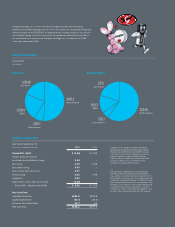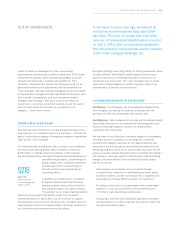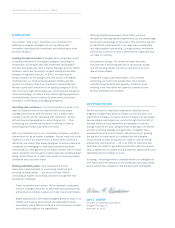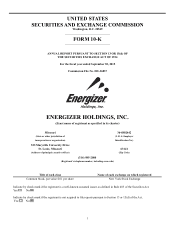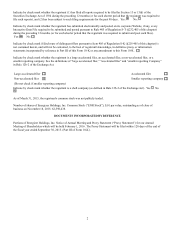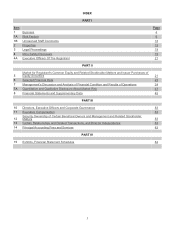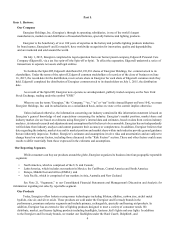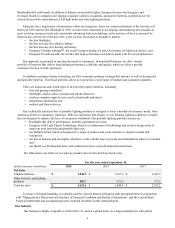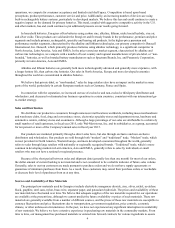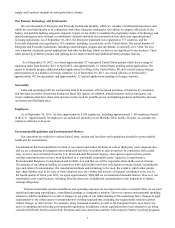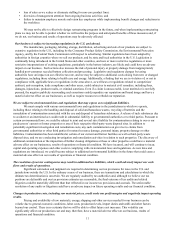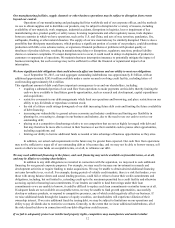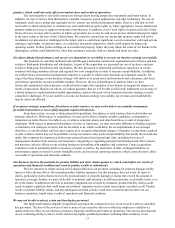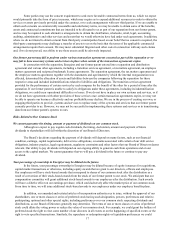Energizer 2015 Annual Report Download - page 12
Download and view the complete annual report
Please find page 12 of the 2015 Energizer annual report below. You can navigate through the pages in the report by either clicking on the pages listed below, or by using the keyword search tool below to find specific information within the annual report.8
Any imposition of more stringent environmental requirements may increase the risk and expense of doing business in such
countries.
Available Information
Energizer regularly files periodic reports with the SEC, including annual reports on Form 10-K and quarterly reports on
Form 10-Q, as well as, from time to time, current reports on Form 8-K, and amendments to those reports. The SEC maintains
an Internet site containing these reports, and proxy and information statements, at www.sec.gov. These filings are also available
free of charge on Energizer's website, at www.energizerholdings.com, as soon as reasonably practicable after their electronic
filing with the SEC. Information on Energizer's website does not constitute part of this Form 10-K.
Item 1A. Risk Factors.
You should carefully consider the following risks and other information in this filing in evaluating Energizer and
Energizer common stock. Any of the following risks and uncertainties could materially adversely affect our business,
financial condition or results of operations.
Risks Related to Our Business
We face risks associated with global economic conditions.
Unfavorable global economic conditions and uncertainty about future economic prospects could reduce consumer
demand for our products. This could occur as a result of a reduction in discretionary spending or a shift of purchasing
patterns to lower cost options such as private label brands sold by retail chains or price brands. This shift could drive the
market towards lower margin products or force us to reduce prices for our products in order to compete. Similarly, our
retailer customers could reduce their inventories, shift to different products or require us to lower our prices to retain the
shelf placement of our products. Declining financial performance by certain of our retailer customers could impact their
ability to pay us on a timely basis, or at all. Worsening economic conditions could harm our sales and profitability.
Additionally, disruptions in financial markets could reduce our access to debt and equity capital markets, negatively
affecting our ability to implement our business strategy.
Competition in our industries may hinder our ability to execute our business strategy, achieve profitability, or maintain
relationships with existing customers.
The categories in which we operate are mature and highly competitive, both in the United States and globally, as a
limited number of large manufacturers compete for consumer acceptance, limited retail shelf space and e-commerce
opportunities. Because of the highly competitive environment in which we operate, as well as increasing retailer
concentration, our retailer customers, including online retailers, frequently seek to obtain pricing concessions or better trade
terms, resulting in either reduction of our margins or losses of distribution to lower-cost competitors.
Competition is based upon brand perceptions, innovation, product performance, customer service and price. Our ability to
compete effectively may be affected by a number of factors, including:
• our primary competitor, Duracell International, Inc., has, and our other competitors may have, substantially greater
financial, marketing, research and development and other resources and greater market share in certain segments
than we do, which could provide them with greater scale and negotiating leverage with retailers and suppliers;
• our competitors may have lower production, sales and distribution costs, and higher profit margins, which
may enable them to offer aggressive retail discounts and other promotional incentives;
• our competitors have obtained, and may in the future be able to obtain, exclusive distribution rights at
particular retailers or favorable in-store placement; and
• we may lose market share to private label brands sold by retail chains or to price brands sold by local and regional
competitors, which are typically sold at lower prices than our products.
Loss of reputation of our leading brands or failure of our marketing plans could have an adverse effect on our business.
We depend on the continuing reputation and success of our brands, particularly our Energizer and Eveready brands.
Our operating results could be adversely affected if any of our leading brands suffers damage to its reputation due to real
or perceived quality issues. Any damage to the Energizer and Eveready brands could impair our ability to charge premium
prices for our products, resulting in the reduction of our margins or losses of distribution to lower price competitors.


